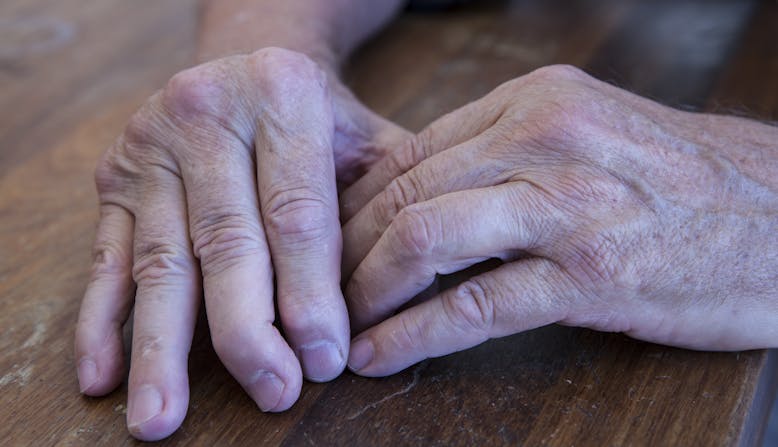Causes and Triggers
Like psoriasis, scientists do not know all the causes of psoriatic arthritis. The immune system and genetics play a role in the development of psoriatic arthritis. The chance of developing psoriatic arthritis is higher for people who have a family member living with psoriatic arthritis. [2] For others, they may develop psoriatic arthritis because of an overactive immune system response triggered by a number of factors.
A psoriatic arthritis flare may include new or increased joint pain, tenderness, swelling, or stiffness. Flares can last for different amounts of time and differ in level of severity.
Triggers are different from person to person. What may worsen your psoriatic arthritis might not have any impact on someone else. Common psoriatic disease triggers include:
- Stress
- Smoking or alcohol use
- Injuries or trauma to the skin or joints
- Illness, such as infections
- Certain medications
- Changes in weather
- Diet
Learn more about triggers and flares by requesting a free Flare Guide and Symptom Tracker.
Diagnosis
Unfortunately, there is no definitive diagnostic test for psoriatic arthritis. The diagnosis is made mostly by your doctor’s observations and by a process of elimination. For example, the symptoms of psoriatic arthritis are similar to those of rheumatoid arthritis, gout, and reactive arthritis.
Psoriatic arthritis is best diagnosed and treated by a rheumatologist (a doctor who specializes in the diagnosis and treatment of diseases that affect the muscles, joints, and bones and related immune-mediated conditions). Early diagnosis and treatment can not only help relieve symptoms but may also help prevent permanent joint damage.
To make a diagnosis of psoriatic arthritis, your rheumatologist may consider several factors:
- Examination of your skin, joints, and nails
- X-rays
- MRI scans
- Ultrasounds
- Blood tests
Each step will help to rule out other conditions and lead to an accurate diagnosis.
Until a diagnostic tool for psoriatic arthritis is developed, it may take a few appointments with a rheumatologist to get the correct diagnosis. Although it may take time, getting an accurate diagnosis is very important for managing your symptoms, preventing permanent joint damage, and caring for your overall health.
Screening for Psoriatic Arthritis
If you think you may have psoriatic arthritis, you can learn more by taking a short 5-question quiz. You can share the results with your health care provider. The quiz is based on the Psoriasis Epidemiology Screening Tool (PEST).






.png?ixlib=gatsbyFP&auto=compress%2Cformat&fit=max&rect=12%2C0%2C1175%2C675&w=778&h=447)